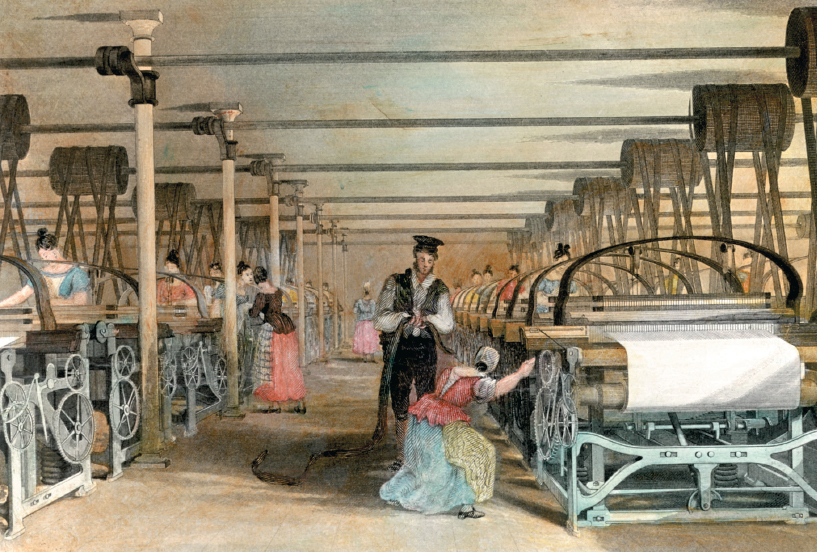How did work and daily life evolve during the Industrial Revolution?
HHAVING FIRST EMERGED IN THE BRITISH COUNTRYSIDE in the late eighteenth century, factories and industrial labor began migrating to cities by the early nineteenth century. As factories moved from rural to urban areas, their workforce evolved as well, from pauper children to families, to men and women uprooted from their traditional rural communities. For some people, the Industrial Revolution brought improvements, but living and working conditions for the poor stagnated or even deteriorated until around 1850, especially in overcrowded industrial cities.

Workers at a Large Cotton MillThis 1833 engraving shows adult women operating power looms under the supervision of a male foreman, and it accurately reflects both the decline of family employment and the emergence of a gender-